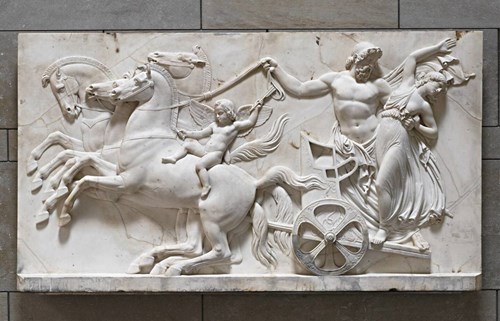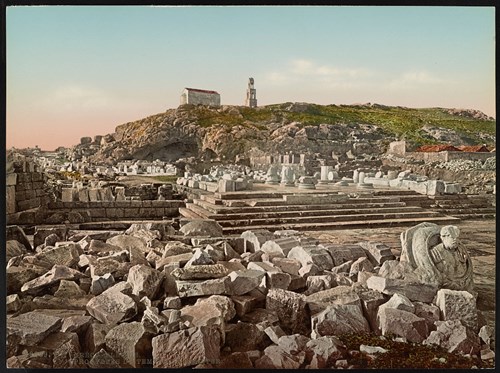The structure and content of the Mysteries
The Eleusinian Mysteries were the oldest and most venerable mystery cult of the ancient world. The myth of Demeter and Persephone formed the foundation of a ritual that lasted for a thousand years and endowed the initiates with hope for better prospects in the afterlife. Unlike mainstream ancient Greek religious rites, whose purpose was to secure divine benevolence and to integrate the individual into the social and political network of the polis, the Mysteries were cults voluntarily selected by individuals. The word “mysterion” derives from the Greek verb “myein” (to close). The selection of this particular word may be explained either as a result of the initiates’ obligation not to reveal the secrets of the ritual to outsiders or as a reference to the act of enlightenment that followed the “opening of the eyes” during the secret ceremony.

The rape of Persephone, Carl Frederik Holbech, 1843, sculpture, Bayerische Staatsgemäldesammlungen - Neue Pinakothek München © Bayerische Staatsgemäldesammlungen - Neue Pinakothek München
The Eleusinian Mysteries serve as the paramount example of this ancient Greek religious phenomenon. The rites were established in Eleusis in the sixth century BCE and were celebrated annually and almost without interruption until the end of antiquity. They were open to people from a wide range of ethnic and social origins, providing them with a happiness beyond all contemporary comprehension. Clement of Alexandria argues that “blessed is one who goes under the earth after seeing these things. That person knows the end of life, and knows its Zeus-given beginning”. Even Cicero, whose cultural horizons were by no means limited, claimed that the Mysteries were the highest divine institution that guided humanity from its previous barbaric existence to a higher stage of civilisation.
The true essence and content of the Eleusinian Mysteries remain obscure. Despite more than a century and a half of archaeological research and numerous references in ancient Greek and Roman literature, the initiates maintained their oath of silence. The physical remnants of the cult in Eleusis, battered by time and human needs, serve as timeless guardians of the rites’ secrets and glory. The story of Demeter and Persephone has become a great source of inspiration for countless artists throughout history. The divine hope imparted on the initiates during the bright nights in the Telesterion remains an elusive and tantalising mystery. Nevertheless, the Eleusinian Mysteries captivate the imagination and serve as a wonderful example of ancient Greek social, spiritual, religious, and artistic excellence.

The Propylaea in Eleusis, Photoglob Company, 1890-1910, photograph, Library of Congress © Library of Congress






